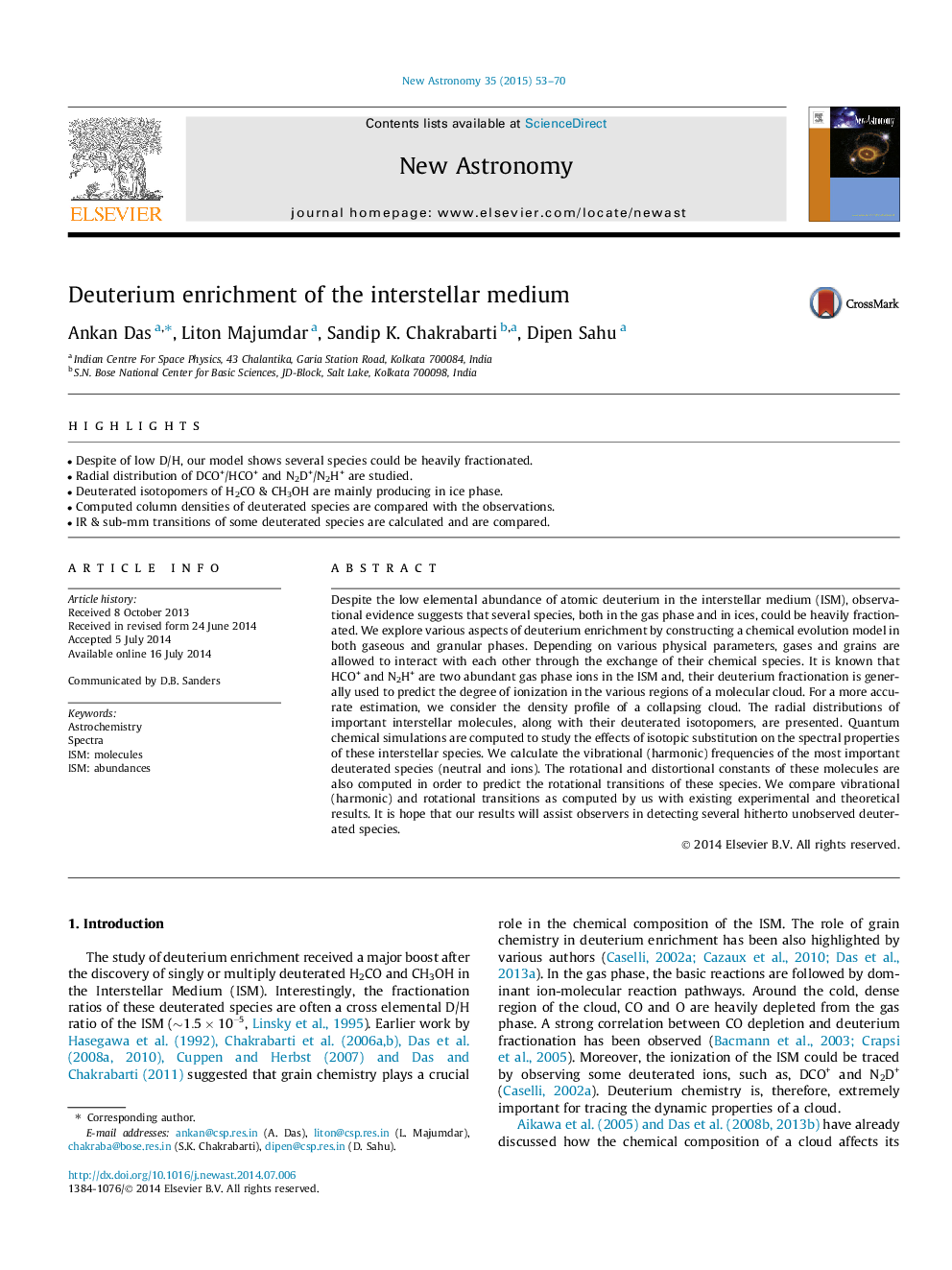| Article ID | Journal | Published Year | Pages | File Type |
|---|---|---|---|---|
| 1778857 | New Astronomy | 2015 | 18 Pages |
•Despite of low D/H, our model shows several species could be heavily fractionated.•Radial distribution of DCO+/HCO+ and N2D+/N2H+ are studied.•Deuterated isotopomers of H2CO & CH3OH are mainly producing in ice phase.•Computed column densities of deuterated species are compared with the observations.•IR & sub-mm transitions of some deuterated species are calculated and are compared.
Despite the low elemental abundance of atomic deuterium in the interstellar medium (ISM), observational evidence suggests that several species, both in the gas phase and in ices, could be heavily fractionated. We explore various aspects of deuterium enrichment by constructing a chemical evolution model in both gaseous and granular phases. Depending on various physical parameters, gases and grains are allowed to interact with each other through the exchange of their chemical species. It is known that HCO+ and N2H+ are two abundant gas phase ions in the ISM and, their deuterium fractionation is generally used to predict the degree of ionization in the various regions of a molecular cloud. For a more accurate estimation, we consider the density profile of a collapsing cloud. The radial distributions of important interstellar molecules, along with their deuterated isotopomers, are presented. Quantum chemical simulations are computed to study the effects of isotopic substitution on the spectral properties of these interstellar species. We calculate the vibrational (harmonic) frequencies of the most important deuterated species (neutral and ions). The rotational and distortional constants of these molecules are also computed in order to predict the rotational transitions of these species. We compare vibrational (harmonic) and rotational transitions as computed by us with existing experimental and theoretical results. It is hope that our results will assist observers in detecting several hitherto unobserved deuterated species.
